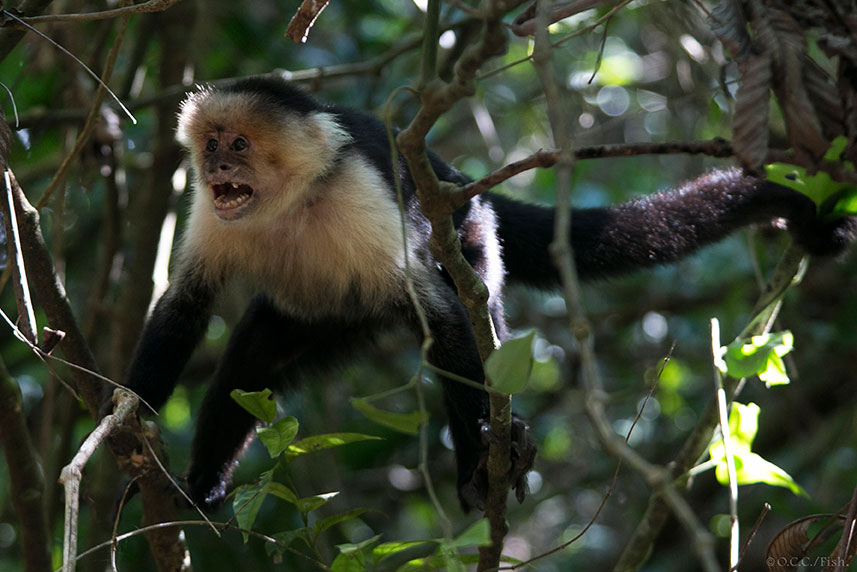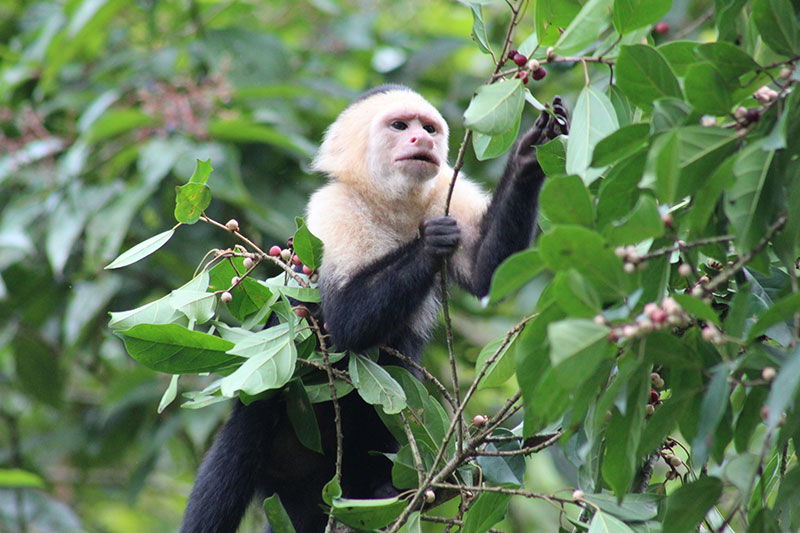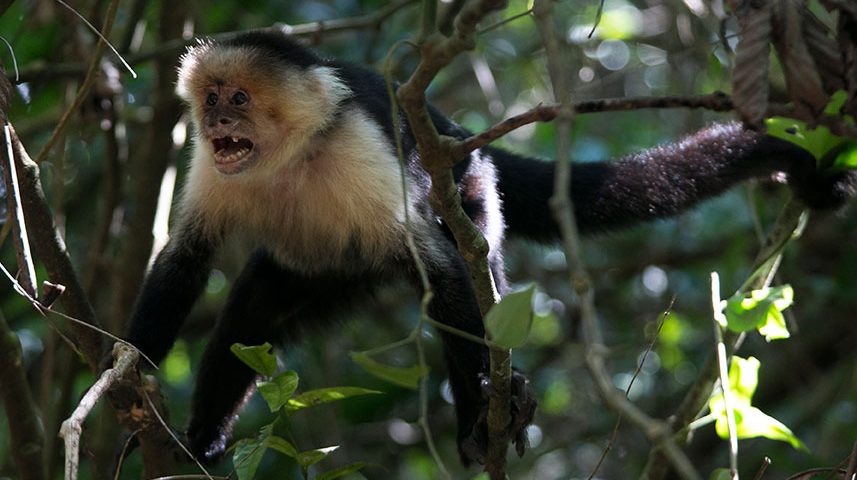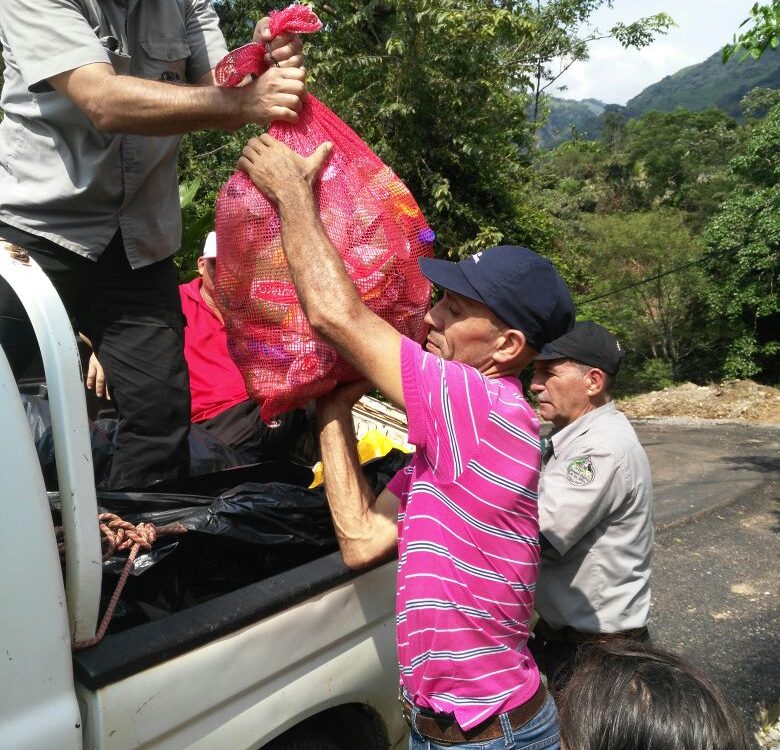
Big Cat Encounter
7 septiembre, 2016
Art in the BEN: Creative internships promote environmental education
25 abril, 2017When you hear the leaves rustle overhead, you may look up to find some of the forest’s most entertaining creatures: White-faced Capuchin monkeys (Cebus capucinus). These social primates travel in multi-male and multi-female packs of 18-20 individuals. Monos carblancas, as they’re known in Costa Rica, are extremely adaptable and can live in a variety of habitats, ranging from dry to wet and primary to secondary forests.
Males range from 3 to 4 kg (6.6 to 8.8 lbs), while the smaller females weigh between 2 to 3 kg (4.4 to 6.6 lbs). Females reach sexual maturity at about 4 years, but don’t begin to give birth for another 3 years. Females have a single offspring every other year and feed, carry, and protect the young until they can take care of themselves. Mothers carry their young on their backs. Males don’t help raise the young, spending more time protecting the group and deterring predators. A social hierarchy exists among the males; alpha males have more mating opportunities and spend more time protecting the group.
Capuchins eat primarily fruits and insects, supplementing with nuts and small invertebrates. When they get a chance, they will also eat birds, small mammals, lizards, and frogs. They’ve been known to use plants for medicinal purposes, rubbing themselves with citrus fruits, vines, and seeds.
Capuchins are prey for larger animals in the forest including jaguars, ocelots, harpy eagles, and tree snakes. But as in the case of many animals, the main threats to capuchins are caused by humans. Monkeys are sometimes taken for the pet trade. And deforestation causes habitat loss and fragmentation, which also brings capuchins into closer contact (and sometimes conflict) with people.
Perhaps due to their adaptability, white-faced capuchins are not currently considered threatened from a conservation standpoint. This is great news for the forest because, due to their fruit-intensive diet, White-faced Capuchins play an important role in seed dispersal. Keep an eye out for these energetic primates on your next trip to the Children’s Eternal Rainforest!

Fotografía por Orlando Calvo

Foto por Alexa Stickel
When you hear the leaves rustle overhead, you may look up to find some of the forest’s most entertaining creatures: White-faced Capuchin monkeys (Cebus capucinus). These social primates travel in multi-male and multi-female packs of 18-20 individuals. Monos carblancas, as they’re known in Costa Rica, are extremely adaptable and can live in a variety of habitats, ranging from dry to wet and primary to secondary forests.



